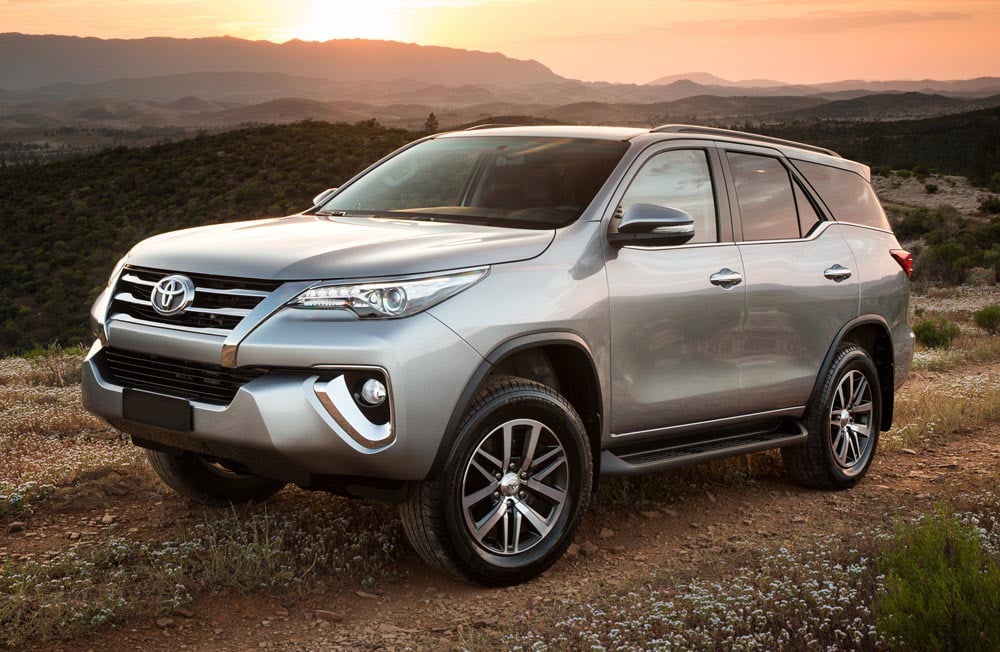
Instead, it gets 17-inch black steel rims to match the off-road personality and go-anywhere intentions. As you’ve probably noticed, the GX doesn’t come with alloy wheels. There’s front and rear air-conditioning, a rear-view camera, first and second row cup holders and bottle holders, voice recognition technology and Bluetooth, and a cooled compartment in the front.


Going for the base GX doesn’t get you many creature comforts or extra luxuries, obviously, but it does come with most necessities as standard. Connected to it is a six-speaker stereo which gives off decent sounds, especially for a base model unit. Instead, it’s properly embedded into the dash and blends in with the design. We like the way the screen doesn’t look like a stick-on tablet like it does in the HiLux. It’s simple to operate, with big clear buttons making selections easy even on the go. There aren’t any cubby holes or tie-down hooks in the back, unfortunately.įor the front passengers there is a modern touch-screen interface. This compares well with the Prado’s 104L, 553L and 974L offered, respectively. Luggage space is rated at 200 litres with all rows up, or 716L with the third row down, and 1080L with all rear seats down. Interestingly, it feels like there is more third-row space than what’s offered in the Prado. It is perhaps at the larger end of the scale compared with some of the other heavy-duty SUVs though, such as the Isuzu MU-X and Holden Colorado 7. The lower seat cushion is a big square seat, however, the backrest is short and headroom is restricted despite special cutaways in the ceiling. It’s only in the third row that you might receive some expressions of discomfort from taller children and adults. In the middle row, which can be adjusted for recline and slide, passengers aren’t going to be complaining about room or comfort. Although, like in the HiLux, the steering column offers limited rake and reach adjustment, resulting in a less-than-ideal driving position in our opinion. They’re situated to provide good headroom and legroom in the front as well. The brown seats aren’t very attractive to look at but they are surprisingly soft and supportive. Compared with the slightly more expensive Prado, the Fortuner’s cabin seems longer and taller, albeit a touch narrower. Toyota has applied lots of basic yet durable plastics to the decor for that robust and rugged feel, with some modern design themes such as silver highlights and a curvaceous dash adding some futuristic appeal. This makes it around $5000 more affordable than the equivalent Prado.īeing based on the HiLux, you don’t expect the interior to be that flash.


TOYOTA FORTUNER 2016 THAILAND REVIEW PLUS
Prices kick off at $47,990, plus $2000 for the auto.
TOYOTA FORTUNER 2016 THAILAND REVIEW MANUAL
This is the only engine option, but it can be paired to a six-speed manual or six-speed auto (as tested).īuyers can select between three main variants, spanning from the GX (as tested), the GXL, to the top-rung Crusade. Under the bonnet is the same 2.8-litre turbo-diesel four-cylinder engine as seen in the latest HiLux and Prado, producing 130kW and 450Nm (420Nm for manual). The Fortuner is primarily a rough and tough SUV that just so happens to offer seating for seven. This gives you some clue as to what type of vehicle it is and what it’s designed to be capable of serious off-roading. The Fortuner rides on the same platform as the new HiLux. Toyota is targeting families and adventurous types with the new Fortuner, but does it do anything the Prado can’t already do? Before we go into the finer details we’ll get the basics down first Most manufacturers have just one seven-seat SUV on offer, if any at all.


 0 kommentar(er)
0 kommentar(er)
